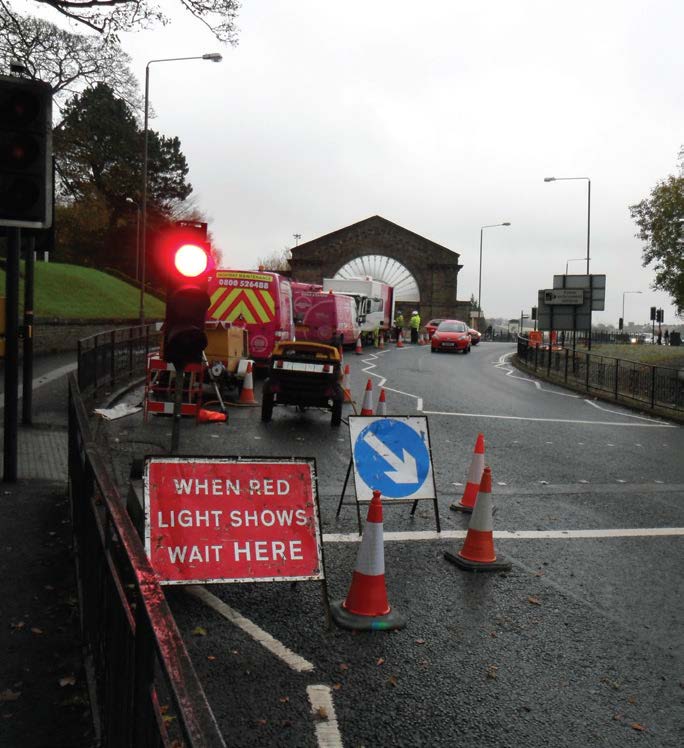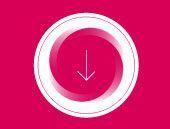Ultraviolet sewer lining – Buxton
 Lanes Group used its knowledge, experience and ultraviolet (UV) light technology to offer the quickest and most energy efficient no-dig solution for a £1.7 million sewer rehabilitation scheme commissioned by Severn Trent Water.
Lanes Group used its knowledge, experience and ultraviolet (UV) light technology to offer the quickest and most energy efficient no-dig solution for a £1.7 million sewer rehabilitation scheme commissioned by Severn Trent Water.
The project, in the historical spa town of Buxton, meant working against a backdrop of rigid time constraints, external stakeholder considerations, and a proviso that disruption for the local community be kept to an absolute minimum.
The project
Buxton’s Victorian sewerage system was struggling to cope with the demands being made of it. The number and frequency of blockages was increasing, as was the risk of flooding incidents. Three kilometres of grade 4 and 5 sewerage pipes were in danger of collapse, around 2,500 metres of which lay under busy roads. To complete the rehabilitation in as short a time possible, minimising disruption to the town’s residents and tourist economy, it was agreed at an early stage that no-dig techniques would be used wherever feasible.
Lanes proposed no-dig sewer rehabilitation with vastly reduced timescales per liner, using its innovative ultraviolet (UV) light cure system.
It meant that, although the whole project was to be phased across a 5-month period to accommodate other factors, using UV would slash the individual liner installation time when compared to standard hot cure reline methods.
Project management
Timing and management were crucial to the success of the project, with 43 separate liner installs totalling 2,500 metres.
The work programme had to be coordinated through stakeholders with other infrastructure activities, including the building of a new water pipe for a Nestlé factory, a road resurfacing programme and the day-to-day operation of six limestone quarries around the town which generated significant HGV movements.
This required intensive on-site liaison with the client, main contractor, traffic management services and other contractors — often accommodating other personnel in the work space.
Detailed project management enabled three reline crews to operate simultaneously.
The Lanes team were present throughout the annual Buxton Festival weekend to educate local residents about the scheme.
Project implementation
Severn Trent Water carried out enabling works, including improving access at 64 of the 93 manholes, in readiness for the main rehabilitation works.
The lining work then took just over 10 weeks to complete.
Sewer diameters ranged from 150mm to 390mm and liner lengths from 1 metre patch repairs up to 192 metres.
To avoid congestion in traffic pinch points, some of the 50 sewers were relined through out-of-hours works.
Working with UV
Curing liners using UV light speeds up installation at all stages of the process:
• The fibre-glass matting liners are pre-impregnated with polyester resin so there is no need for a wet-out process or to keep them refrigerated.
• No scaffolding tower is needed, and one installation truck carries all equipment needed for each install. Each liner is stored, folded in a crate by the first access point.
• A camera unit is sent through the pipe with a nylon pull-cord attached. This is then used to bring back the steel winch line
used to draw the liner through the pipe, before the end elements are fitted.
• The operator inputs data – including the length, thickness and diameter of the liner – into a computer in the install truck. The automated system records (data and video) the whole process.
• The UV light train, propelled by a computerised winch and a hot air compressor, is inserted in the pipe. While the compressor inflates the liner, the UV lights cure the resin.
• The operator can monitor the process via a CCTV camera.
• The precise cure time depends on a combination of factors. However, curing time of a 60-metre length of 225mm diameter liner is, typically, one metre per minute. A standard hot cure takes on average one metre per hour.
• The final step is to trim the ends and open any lateral connections using robotic high-speed KA-TE cutters.
UV lining – a more sustainable solution
UV light cure technology offered major benefits to the project, the client and the community:
• Greatly reduced cure time per liner (a minute per metre compared to an hour per metre hot cure, based on 60-metre length of 225mm diameter liner).
• No scaffold tower reduced set-up and de-rig time, so smaller work area and no headroom limitations.
• Fast installation reduces impact on the local community.
• Fewer road journeys so fewer emissions.
• No boiler required – reduced energy use.
• No styrene-contaminated wastewater to dispose of.
• UV cure allows thinner liner, optimising water flow.
• Less waste of lining material (including no tower drop)
• Predicted liner life of 120 years – needing fewer repairs and interventions.
• Reduced flood risk.
Structural statistics • UV long term modulus —12000mpa
• (hot cure: 2200mpa)
• UV short term modulus — 8000mpa
• (hot cure: 600mpa)
Client Benefits
• Relining 2,500 metres of sewer pipe using the latest no-dig UV light reline technology
• Demonstrating how UV relining can be a more sustainable sewer rehabilitation technique
• Showing how UV relining significantly reduces liner installation times and disruption for the local community
• Working with multiple stakeholders to successfully project manage complex implementation plan
Further reading
-

Ultraviolet sewer lining – Buxton PDF
Download PDF







